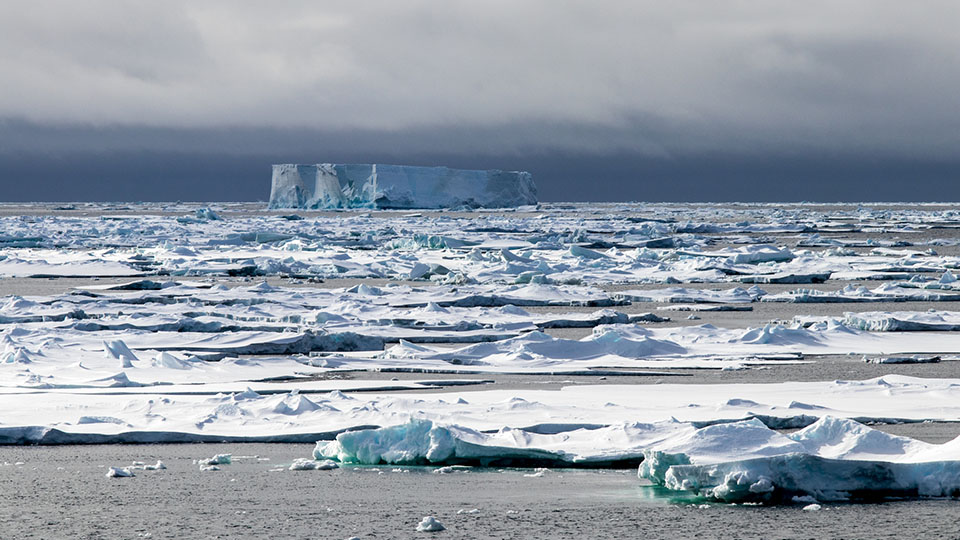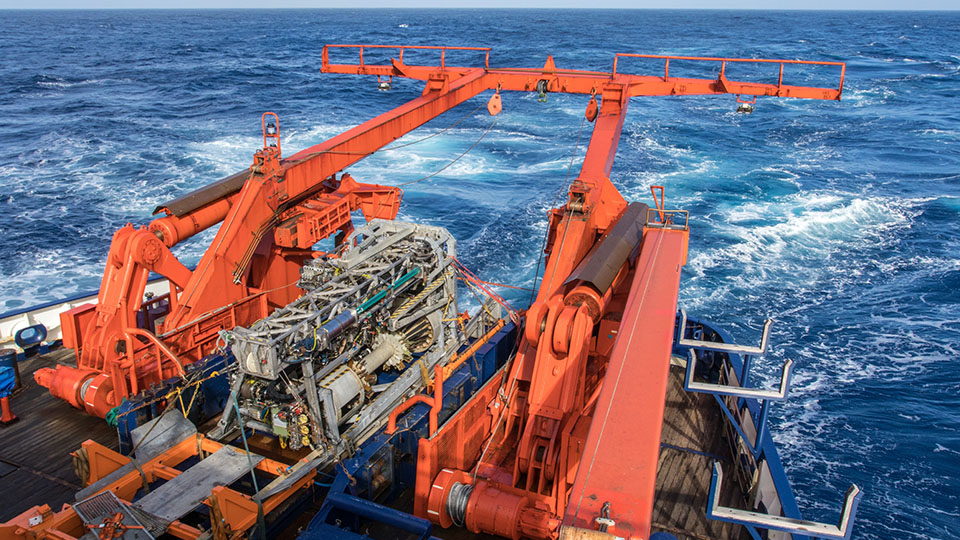- Home
- Discover
- Media Releases
- Media Releases 2017
- Polarstern returns to homeport
Polarstern returns with MeBo and precious cargo to homeport
The oldest sediments that the expedition members extracted from the seafloor likely date back up to 70 million years. As Dr Karsten Gohl proudly reports, “We’ve brought back the first samples of sedimentary rock from the time before the first Antarctic glaciation ever collected in this part of West Antarctica.” The geophysicist from the Alfred Wegener Institute, Helmholtz Centre for Polar and Marine Research (AWI) was the scientific head of the expedition to the Amundsen Sea. His chief responsibility was to coordinate the sample drilling, sediment sonar sweeps, seismic and aeromagnetic measurements, geothermal temperature probing, and bathymetric and echographic sediment mapping so that all the researchers on board could successfully gather the samples and data they came for. In addition, the ship’s on-board helicopters were used to drop scientists off on nearby islands and the Antarctic mainland, giving them the opportunity to take rock samples and identify geodetic survey markers.
First use of MeBo in Antarctica
The true highlight of the expedition: the first chance to use the seafloor drill rig MeBo70, provided by the University of Bremen’s MARUM - Center for Marine Environmental Sciences. "For eleven of the drilling sites, we were able to use the MeBo to reach 36 meters into the seafloor,” enthuses Gohl. To help the drill rig retrieve cores of sediment gradually deposited over the past 70 million years, it was carefully lowered to the ocean floor with a specially designed cable. The MeBo team also use this cable to control the sample collection, during which the rotating drill shaft, which is constantly lengthened from a magazine, gradually bores deeper and deeper into the sediment layers. Since the drill rig remains attached to the ship during operation, the Polarstern had to precisely maintain her position: she couldn’t budge more than 10 meters to either side, or more than 20 meters forward or backward, so as to ensure the MeBo could safely operate up to a 1,000 meters below the water’s surface.
To make matters worse, a number of icebergs were drifting through the research area at the time, and even huge icebreakers like the Polarstern don’t dare stand in these giants’ way. “Working together with Captain Stefan Schwarze and his crew, we scientists did our best to combine satellite images, weather forecasts, ocean-current measurements and direct observations to predict how the icebergs would drift,” Gohl recalls. The 57 meters of sediment cores they’ll soon be unloading in Bremerhaven are a testament to how successful their joint efforts were. We’ll only know whether the samples and data will be enough to answer essential questions concerning the development of the ice sheet in the Amundsen Sea following painstaking analyses in laboratories at the researchers’ home institutes. According to Gohl, “The initial glimpses we had of samples and data while still on board were very promising. For instance, we now know that our expedition marked the first time sedimentary rock 50 to 70 million years old was sampled in this part of West Antarctica. The sediments stem from a very warm epoch predating the first great freezing of Antarctica.” Further samples contain sediment from the most recent deposits, left behind by melt-water from the Pine Island Glacier, mingled with deposits from the water column. These deposits will help to more accurately estimate the age and progression of the sedimentation processes and history of the glacier’s melting.
The scientists who took part in the Amundsen Sea expedition made it back home long before the fruits of their labours: the voyage to the Antarctic ended in Punta Arenas, Chile in mid-March, after which the Polarstern began a four-week return trip across the Atlantic. During this transit, the crew conducted air chemistry, physical and atmospheric experiments. In Las Palmas, the Polarstern picked up a group of students and their advisors, who engaged in a training programme in hydro-acoustic measurement.
Open Ship in the Lloyd Werft
Later, in Le Havre, five members of the German Parliament’s Committee on Education, Research and Technology Assessment and two representatives of the Federal Ministry of Education and Research came on board, accompanied by AWI Director Prof Karin Lochte, to gain an impression of the scientific work done on the Polarstern; very much in keeping with the goals of the Science Year 2016*17 – Seas and Oceans. All the while, preparations were also being made on board for the “Open Ship”, an event scheduled for the weekend after Easter, during which the Polarstern will be open to the public. Admission is free, the ship is open from 11 am to 5 pm on Saturday and from 10 am to 4 pm on Sunday.




